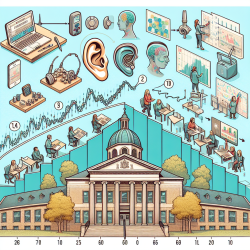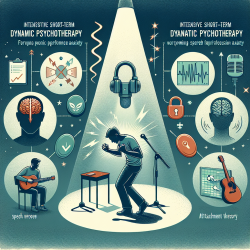The landscape of communication disorders education in Canada has seen significant evolution, as detailed in the comprehensive research article, "The Development of Canadian University Programs in Communication Disorders" by Donald Doehring and Louise Coderre. This article provides an insightful retrospective on the growth and development of seven Canadian university programs from their inception to the present day. For practitioners in the field of speech-language pathology and audiology, understanding this evolution is not just about acknowledging history but about leveraging this knowledge to enhance professional skills and contribute to further advancements in the field.
One of the key takeaways from this historical overview is the role of interdisciplinary collaboration in the establishment and growth of these programs. Initiators included not only speech and hearing professionals but also individuals from medicine, education, and other fields. This underscores the importance of interdisciplinary approaches in the education and practice of communication disorders today. Practitioners can enhance their skills by seeking out and engaging in interdisciplinary collaborations, whether in clinical settings, research, or education.
The evolution of program names, affiliations, and degree offerings over time reflects the dynamic nature of the field and the ongoing efforts to align educational programs with professional and scientific advancements. For instance, the transition from diploma and bachelor's programs to master's and doctoral programs highlights the increasing complexity and depth of knowledge required in the profession. Practitioners should view this as a call to pursue continuous education and professional development opportunities. Engaging in advanced studies or specialized training can open new avenues for clinical practice, research, and leadership roles within the field.
The article also sheds light on the challenges faced by these programs, including issues related to funding, space, equipment, and faculty recruitment. These challenges are not unique to the past; they continue to resonate within academic and professional circles today. By understanding these challenges, practitioners can better appreciate the resources and opportunities available to them and can be motivated to contribute to the ongoing development and sustainability of their profession. Advocating for increased funding, participating in program accreditation processes, or contributing to curriculum development are just a few ways practitioners can make a difference.
Furthermore, the specialization areas offered by the programs have expanded over time, reflecting the broadening scope of practice in speech-language pathology and audiology. This diversification presents practitioners with a plethora of areas in which to specialize or expand their expertise. From audiology to speech-language pathology and specializations in the education of hearing-impaired children, the field offers a rich tapestry of professional paths. Embracing specialization or seeking interdisciplinary expertise can not only enhance a practitioner's skill set but also improve the quality of care provided to clients.
Finally, the article highlights the healthy, vigorous, and growing nature of these programs, alongside their future plans emphasizing training at the Ph.D. level and expanding research activities. This forward-looking perspective is inspiring for current practitioners. It serves as a reminder of the profession's potential for growth and the importance of contributing to its body of knowledge. Practitioners can engage in research, mentor future professionals, or innovate in their practice settings to contribute to the field's advancement.
In conclusion, the development of Canadian university programs in communication disorders, as detailed by Doehring and Coderre, offers valuable lessons for practitioners looking to enhance their skills and contribute to the field. By embracing interdisciplinary collaboration, pursuing continuous education, advocating for the profession, specializing in areas of interest, and engaging in research, practitioners can play a pivotal role in shaping the future of speech-language pathology and audiology in Canada and beyond.
To read the original research paper, please follow this link: The Development of Canadian University Programs in Communication Disorders.










